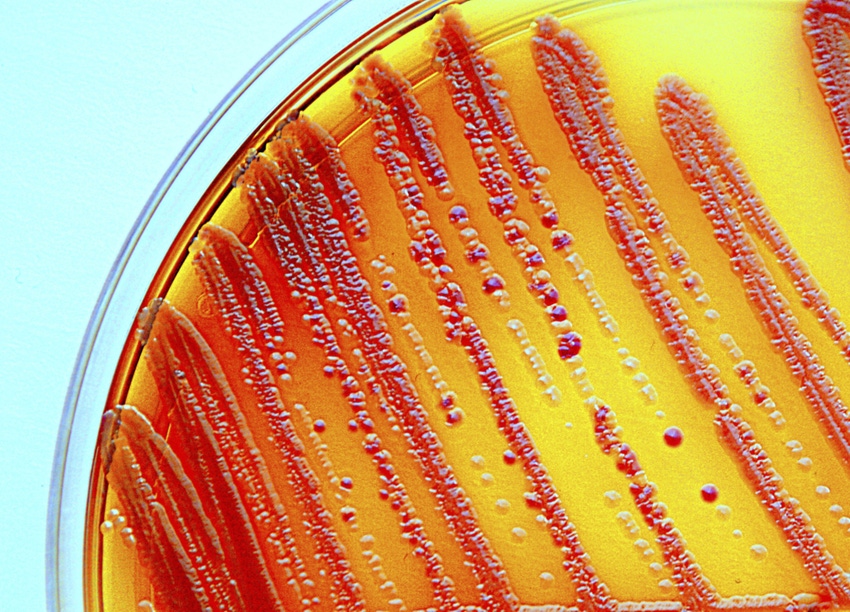CRISPR repurposed to develop better antibiotics
Modified gene editing tool allows researchers to identify how antibiotics inhibit growth of pathogens.
January 14, 2019

A University of Wisconsin-Madison researcher and his collaborators at the University of California-San Francisco (UCSF) have repurposed the gene-editing tool CRISPR to study which genes are targeted by particular antibiotics, providing clues on how to improve existing antibiotics or develop new ones.
According to the University of Wisconsin-Madison announcement, resistance to current antibiotics by disease-causing pathogens is a growing problem.
"What we need to do is to figure out new weaknesses in these bacteria," said Jason Peters, a University of Wisconsin-Madison professor of pharmaceutical sciences who developed the new system.
The technique, known as Mobile-CRISPRi, allows scientists to screen for antibiotic function in a wide range of pathogenic bacteria.
Using a form of bacterial sex, the researchers transferred Mobile-CRISPRi from common laboratory strains into diverse bacteria, even including a little-studied microbe making its home on cheese rinds, the announcement said. This ease of transfer makes the technique a boon for scientists studying any number of bacteria that cause disease or promote health.
Peters worked with Carol Gross, Oren Rosenberg and other colleagues at UCSF and other institutions to design and test Mobile-CRISPRi. The system reduces the production of protein from targeted genes, allowing researchers to identify how antibiotics inhibit the growth of pathogens. That knowledge can help direct research to overcome resistance to existing drugs.
The researchers published their findings Jan. 7 in the journal Nature Microbiology. They took advantage of the increasingly popular molecular tool CRISPR, but in a unique way.
"Most people, when they think about CRISPR, think about gene editing, but that's not what I do," Peters said.
Normally, the CRISPR system gets targeted to a gene, where it cuts the DNA in two. The gene can be edited while the cell repairs the damage.
However, Peters and his collaborators worked with a defanged form of CRISPR known as CRISPRi. CRISPRi has been engineered to be unable to cut DNA. Instead, it just sits on the DNA, blocking other proteins from gaining access to and turning on a particular gene, the researchers explained. The result is lower expression of the gene and a reduced amount of the protein it codes for.
The researchers showed that if they decreased the amount of protein targeted by an antibiotic, bacteria became much more sensitive to lower levels of the drug — evidence of an association between gene and drug. Thousands of genes at a time can be screened as potential antibiotic targets this way, helping scientists learn how antibiotics work and how to improve them, the announcement said.
To make CRISPRi mobile, the researchers developed methods to transfer the system from common lab models like Escherichia coli to disease-causing species, which are often harder to study. Peters' team turned to one of the natural ways bacteria link up and exchange DNA, a kind of bacterial sex called conjugation.
Using conjugation, Peters' team transferred Mobile-CRISPRi to the pathogens pseudomonas, salmonella, staphylococcus and listeria, among others.
"What that means is that you can now do studies on how antibiotics work directly in these pathogens," Peters said. "That could give us a better clue about how these drugs work in the different organisms and potentially what we can do to make them better."
The real test of Mobile-CRISPRi's mobility came from cheese. As cheese ages, it curates its own landscape of microbes. Scientists are just starting to investigate the immense diversity of bacteria and fungi on cheeses, which contribute to their complex flavors, the announcement said. One of those bacteria, Vibrio casei, was found on the rind of a French cheese in 2010 by Peters' collaborator, Rachel Dutton of the University of California-San Diego.
Manipulating genes is simple in established laboratory bacteria such as E. coli, but there is often no way to study genes in bacteria recently isolated from the environment, such as V. casei. However, Mobile-CRISPRi was easily transferred into the strain, opening up new avenues for understanding how the bacteria colonizes and helps age cheese. As a proof of concept, V. casei suggests that Mobile-CRISPRi should be useful for any number of previously understudied bacteria, both those that cause harm and those that are beneficial.
Peters is now offering Mobile-CRISPRi to other researchers to study their bacteria of choice.
"So, now it's going to be completely available to the community," Peters said. "This gives people a path forward."
This work was supported by the National Institutes of Health and the U.S. Department of Agriculture's National Institute of Food & Agriculture Hatch Project.
Source: University of Wisconsin-Madison, which is solely responsible for the information provided and is wholly owned by the source. Informa Business Media and all its subsidiaries are not responsible for any of the content contained in this information asset.
You May Also Like



